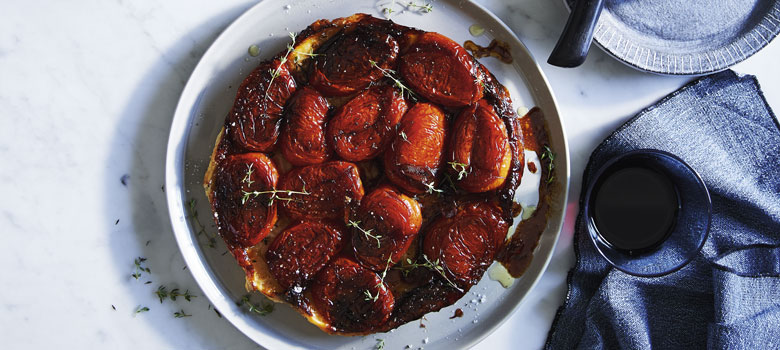
Life
Seasonal Tomato
You will likely remember the story of the old lady who swallowed a fly – a fantastical tale of gluttony and stupidity that was designed to make children giggle.
What you may not know is that in the 1970s, a similar tale played out in California’s Central Valley, but instead of old ladies, it was industrial agriculture, and instead of a fly, it was the humble tomato. It was not funny.
Central Valley was the perfect place to grow tomatoes. The long, hot summers coupled with America’s insatiable appetite for ketchup, ensured a good industry for the 5,000 or so local farmers. A young Tony Scherer was among the tomato pickers, earning 75c an hour, an income flush with perks: “The flavour was so great, I would eat them in the field, I could hardly eat my lunch I would eat so many!”
However, just outside the valley, work of a different kind was taking place. An agriculturalist and an engineer at the University of California, Davis were creating the first mechanical tomato harvester. The aim was innocent enough: increase production while reducing costs and reliance on external labour.
The tomato, a delicate, thin-skinned fruit, had largely avoided mechanisation up until this point, after all, this was a fruit you would think twice about taking on a picnic. How could cold mechanical arms do the job of a young boy’s hands?
But money is money and technology is technology and soon enough, the picker was built. The machine was designed to pull the whole vine, not just the tomato, depositing it on a conveyer belt where the tomatoes were picked and sorted.
Throwing good money after bad
A problem quickly became apparent, the machine couldn’t distinguish ripeness. Vines laden with green tomatoes were being discarded. For the machine to fulfil its promise, flowering, fruiting and ripening needed to be brought into line. This process, usually taking over three months, needed to be reduced to a day.
Enter hybrid vf-145 or, rather unromantically, the ‘square tomato’, with its relatively consistent shape and ripening period. While crossing varieties to achieve specific traits wasn’t new, this was the first time flavour found itself on the bottom rung - what the vf-145 tomato had in consistency, it lacked in sugars and taste.
Sadly, even this was not enough for our industrialists. And so, they sprayed. First, a growth hormone to encourage redness before picking (not to be confused with actual ripeness). This was soon joined by another spray, a desiccate, used to eradicate pesky green foliage that hid the tomatoes. Then, as the now exposed tomatoes started to shrivel, crack and split in the bright sun, they added a third spray, a white wash, essentially a sunscreen.
Of course, they still had no flavour, the hormone had changed their colour, but the fruit (and its sugars) had not kept up, and so, the final addition: more salt and sugar, both added when they hit production.
Fly. Spider. Bird. Cat. Dog. Goat. Ketchup.
the final verse
Perhaps unsurprisingly, that tomato industry very nearly went the way of the old lady. Certainly, for the small producers it already had: 4,400 of the 5,000 Central Valley producers went out of business, and an estimated 32,000 people lost their jobs.
Luckily for Tony, by the time the machines had moved in, he had moved out. He had bought his own land and was farming it organically with old techniques. He was not alone, in fact, he found himself among a group of like-minded ‘hippy farmers’ pushing for a revival of the San Francisco Farmers Markets, finding support in Alice Waters at Chez Panisse and the team at Zuni Café among other excellent, produce-focused restaurants. With the restaurants came the people, with the people came the movement – the anti-movement.
His is an enduring legacy, and Tony is now doing likewise for the lucky people of Tasmania, with the vegetables he grows on Rocky Tops Farm. The moral, I suppose, is to choose wisely where you spend your money, as we’re all as much a part of the legacy as the farmers, and happy endings are possible in the most unlikely of situations!
Select and store
Tomatoes should have a beautiful perfume. Hold them to your nose and breathe in their aroma as you would a rose. If there’s no perfume, put the tomato down. You want a tomato to be firm to the touch, but not rock hard. Discard those with splits in the skin or brown patches, indicating they are probably old and may be rotten or bitter to taste. Tomatoes are best stored at room temperature – not in the fridge.
Tomatoes love
Salt, anchovies, mozzarella, fetta, garlic, basil, onions, salami, olives, olive oil, balsamic vinegar, red wine vinegar, mussels, chives, parsley, pepper.